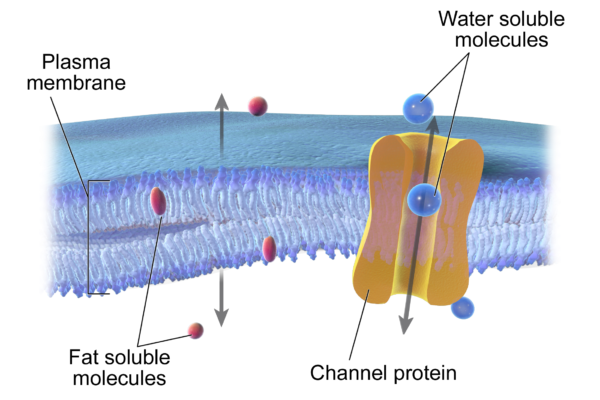Human cells inspire next generation of energy storage technology, with a novel ion highway mimicking human cells showing promising potential to significantly enhance battery performance.
Scientists are utilizing certain chemical characteristics found in nature to mimic switches within human cells. By arranging molecules that attract or repel water, scientists have been able to create logic gates similar to those frequently used in circuit design and computation, thereby opening channels for the rapid flow of charged ions. This not only brings good news but also serves as a testament to the significant results that respecting the complexity of the human body can yield.
A new paper authored by researchers from Lawrence Berkeley National Laboratory in California and Washington State University about this research was published in the journal “Advanced Materials” on November 19.
Ion Highway of Charged Particles
In the experiment, the five co-authors constructed a network of nanoscale gel-like particles based on knowledge of human chemistry, utilizing how these materials “swell” in nature to accommodate the passage of charged ions. Water and ions are crucial in the human body – our bodies conduct large amounts of electrical energy and rely on specialized channels and certain barriers to transport ions and water. The success of this material lies in the significant contrast presented by the hydrophilic and hydrophobic molecules used within it.
To construct this water-based ion highway, scientists employed a three-layer “membrane” structure composed of hydrophobic and hydrophilic molecules. Chemical principles enable it to “attract ions” into this highway and create on-ramps by surrounding hydrophilic channels with hydrophobic molecules. This process mimics the mechanism our cells use to control whether water passes through cell walls, allowing for the transport of electrolytes and other substances in the human body.
The specific material type used in this experiment is called Organic Mixed Ion Electron Conductors (OMIEC), where ions typically run in a disordered manner, slowing down the flow of current. This disorder contrasts sharply with the orderly and rapid passage of water through cell walls. “We found that ions flow nicely in the conductor, but they have to pass through a matrix, a complex network akin to a maze of electron flow channels, which slows down the pace of ion flow,” said senior author Brian Collins in a statement released by Washington State University.
Hence, providing them with a spacious ion highway significantly boosts their transport speed. The design of these on-ramps and the use of chemical methods to switch them imitate the behavior of molecular transport in the human body, the intricacies of which have not been fully understood to this day. For example, we are unsure of how certain molecules in our bodies, such as certain proteins, can perform up to six different tasks, requiring the protein to adopt completely different shapes.
Biomimetic Research Explores New Frontiers
At times, science simplifies the human body into a “machine,” a viewpoint that can hinder progress, overlooking the complexity of systems and leading to erroneous conclusions based on incomplete information. Our cells are not machines; they are more like freelancers who can switch between tasks multiple times in a day to support various complex missions, all of which depend on the multitude of molecules within our bodies.
After constructing the biomimetic membrane and testing its ion transport speed, researchers found that this ion “highway” allows for transport speeds an order of magnitude faster than traditional electrophoresis methods. Both methods have applications in the production and design of lithium-ion batteries, as the flow rate of ions affects the power output, charging time, and capacity of batteries.
The idea of using biomimetic molecular switches to guide ions to their desired locations in a more organized manner is truly exciting. Just imagine, previously needing to place a row of cups under splashing rainwater to collect water, and then suddenly discovering the existence of something called a faucet, enabling a faster and better accomplishment of the goal. This is the most vivid explanation for the groundbreaking results of this new research.

